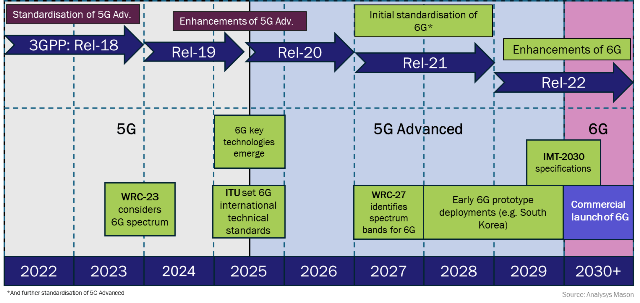Stakeholders within the telecommunications industry are already charting the course for the next generation of mobile networks, with an eye towards 6G.
 According to a recent report from Analysys Mason, entities including vendors, research organizations, academic institutions, operators, and governments are actively engaged in envisioning and researching new 6G technology.
According to a recent report from Analysys Mason, entities including vendors, research organizations, academic institutions, operators, and governments are actively engaged in envisioning and researching new 6G technology.
The report highlights that vendors are currently taking the lead in 6G research and development (R&D) projects, aiming to align forthcoming standards with their evolving technologies. However, Analysys Mason urges operators to emulate this proactive stance to ensure that 6G technologies translate into tangible commercial value.
Although 5G networks are yet to achieve ubiquitous coverage worldwide, discussions around 6G are gaining traction. The next immediate step, according to the report, is the deployment of 5G Advanced, slated to optimize 5G networks technologically by 2025, the report said.
Building upon this foundation, 6G networks are projected to offer high-performance, AI-driven, and sustainable connectivity, with standardization expected to commence around 2028. Following the finalisation of the initial standards in 2028, early 6G prototype deployments are expected to precede the full commercial launch of 6G networks from 2030.
The involvement of various organizations in 6G R&D, spanning from vendors to governments, underscores the global interest in shaping the future of telecommunications. Key technologies such as reconfigurable intelligent surfaces (RIS), photonic technology, and AI-enabled air interfaces (AI-AI) are already undergoing early-stage testing.
Despite the broad participation, the report notes a discrepancy in operator involvement compared to vendors, research institutions, and academia. Analysys Mason Analyst Stephen Burton emphasizes that operators need to amplify their engagement in 6G R&D to ensure their technologies are central to future standards and deployments.
Operator participation, currently accounting for a modest 7 percent of all 6G R&D activities, is primarily focused on key areas such as AI/ML integration, RAN enhancements, and network security. By prioritizing these technologies, operators aim to deliver resilient, secure, and cost-effective 6G networks capable of supporting a diverse range of applications across sectors.
Recognizing the potential pitfalls observed during the transition to 5G, operators are urged to play a more proactive role in shaping the trajectory of 6G development. This includes aligning R&D efforts with future market demands and revenue opportunities, ensuring that investments in 6G technologies yield substantial returns.
